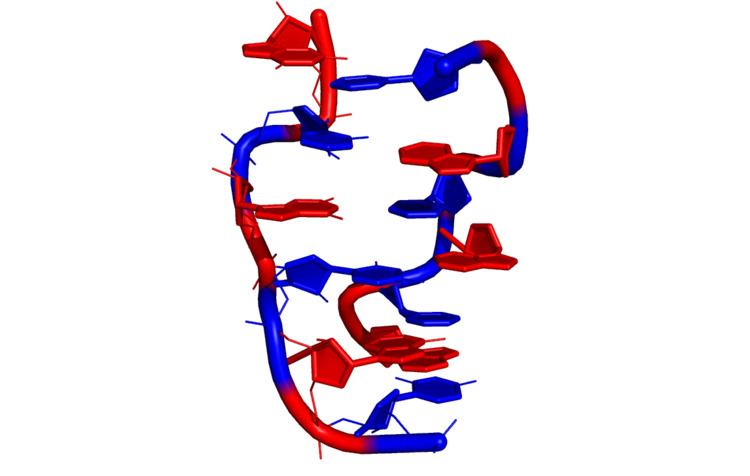 | ||
Z-RNA is a left-handed alternative conformation for the RNA double helix. Just like for Z-DNA, Z-RNA is favored by a sequence composed of Purine/Pyrimidine repeats and especially CG repeats.
Contents
Discovery
The ability of dsRNA to convert into a left-handed helix was demonstrated using NMR and circular dichroism in 1984. This conversion was shown to require high ionic strength and elevated temperatures (35 degrees).
Structural characteristics
NMR studies of the Z-RNA double helix at high salt concentrations show Z-RNA to resemble, but not be identical, to that of Z-DNA. The structure of the complex of a Zalpha domain with Z-RNA under close to physiological salt concentrations however suggests a structure much closer to the Z-DNA conformation and points to two forms of Z-RNA (low and high salt conformations)
Role in biology
Formation of Z-RNA in living cells was suggested by experiments using anti-Z-RNA antibodies to stain fixed protozoan cells Further evidence accrued with the discovery that the Zalpha domain of the RNA editing enzyme ADAR1 binds and recognizes with high affinity Z-RNA. Structural features of the recognition of Z-RNA by Zalpha domains were revealed by the crystallographic study of the complex
